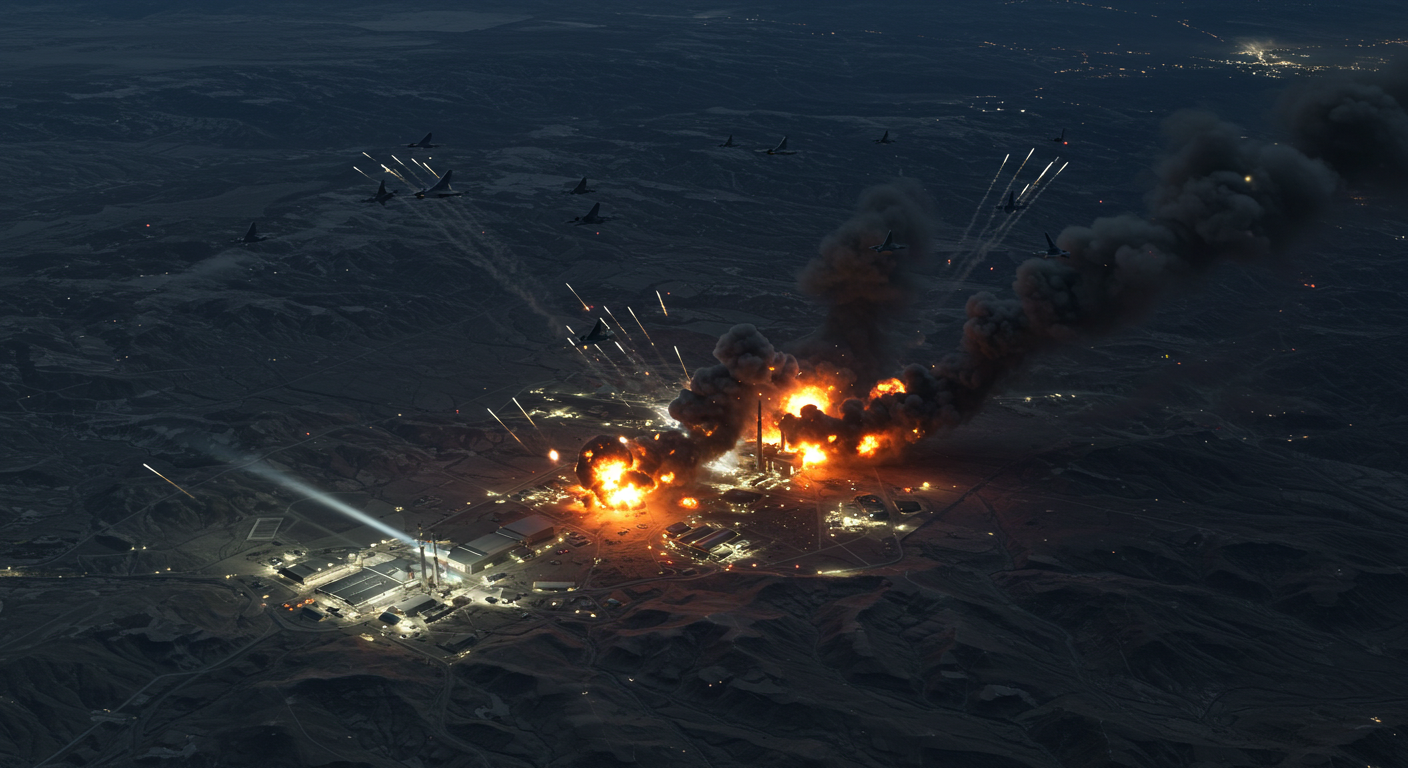Introduction
On June 22, 2025, the United States carried out an airstrike targeting Iran’s nuclear facilities in the cities of Fordow, Natanz, and Isfahan. The stated objective was to neutralize Tehran’s nuclear program amid growing tensions following Israeli airstrikes that began on June 13.
Background and Context
A. Escalating Rhetoric and Tensions
Since 2023, Israel has launched airstrikes on Iranian targets to delay its nuclear advancement. In response, Iran threatened retaliation and suspended negotiations with the U.S.
B. Proxy Conflict Pattern
In February 2024, the U.S. bombed multiple targets in Iraq and Syria linked to Iran’s Revolutionary Guard, following the deaths of American soldiers. Iran retaliated, further escalating regional tensions.
The June 2025 Airstrikes
- Date: June 22, 2025
- Authority: U.S. officials stated that President Trump ordered the strikes
- Primary Targets: Uranium enrichment sites in Fordow, Natanz, and facilities in Isfahan
- Official Motive: To prevent Iran from acquiring nuclear weapons, described by Washington as an “imminent threat”
International Reactions
A. Iran
Iran responded by intensifying its rhetoric. Revolutionary Guard Commander Hossein Salami declared that “no threat will go unanswered” and promised decisive retaliation.
B. Israel
Israel expressed full support for the U.S., calling the attack a complement to its containment strategy, and vowed to continue operations until its security goals are met.
C. International Bodies
The UN and other global players expressed concern about potential escalation, though stronger diplomatic responses are still pending.
Strategic Consequences
- Setback for Nuclear Diplomacy: U.S.–Iran talks have been suspended since June 15, and prospective agreements are stalled.
- Risk of Regional Escalation: There is concern that Iran might retaliate via militias or direct attacks on coalition forces.
- Internal U.S. Division: Support for the action is politically polarized; critics argue it could deepen conflict.
Impact on Iran’s Nuclear Program
Although the full technical damage remains unclear, U.S. officials claim the strike significantly degraded Iran’s enrichment capabilities, particularly at core facilities.
Conclusion
The U.S. airstrike on June 22, 2025, represents a major escalation in efforts to curb Iran’s nuclear ambitions. While intended to prevent nuclear armament, the action brings significant risk of direct conflict, undermines diplomatic progress, and could destabilize the Middle East. Close monitoring of Tehran’s response, its allies’ behavior, and international diplomacy will be critical in the coming days.
FAQs (Frequently Asked Questions)
1. Why did the U.S. strike Iran now?
To halt Iran’s nuclear enrichment capabilities, in response to escalating threats and prior Israeli strikes.
2. Will Iran retaliate?
Iranian officials have stated they will respond decisively, though how and when remains unclear.
3. Could this lead to war?
There is a high risk of escalation, but open conflict is not yet certain. Iran may prefer indirect retaliation via proxies or drones.
Final Notes
This article aims to provide a clear and comprehensive overview of the U.S. airstrike on Iran, highlighting causes, global reactions, and potential future outcomes. Stay informed through reliable sources and official updates.

